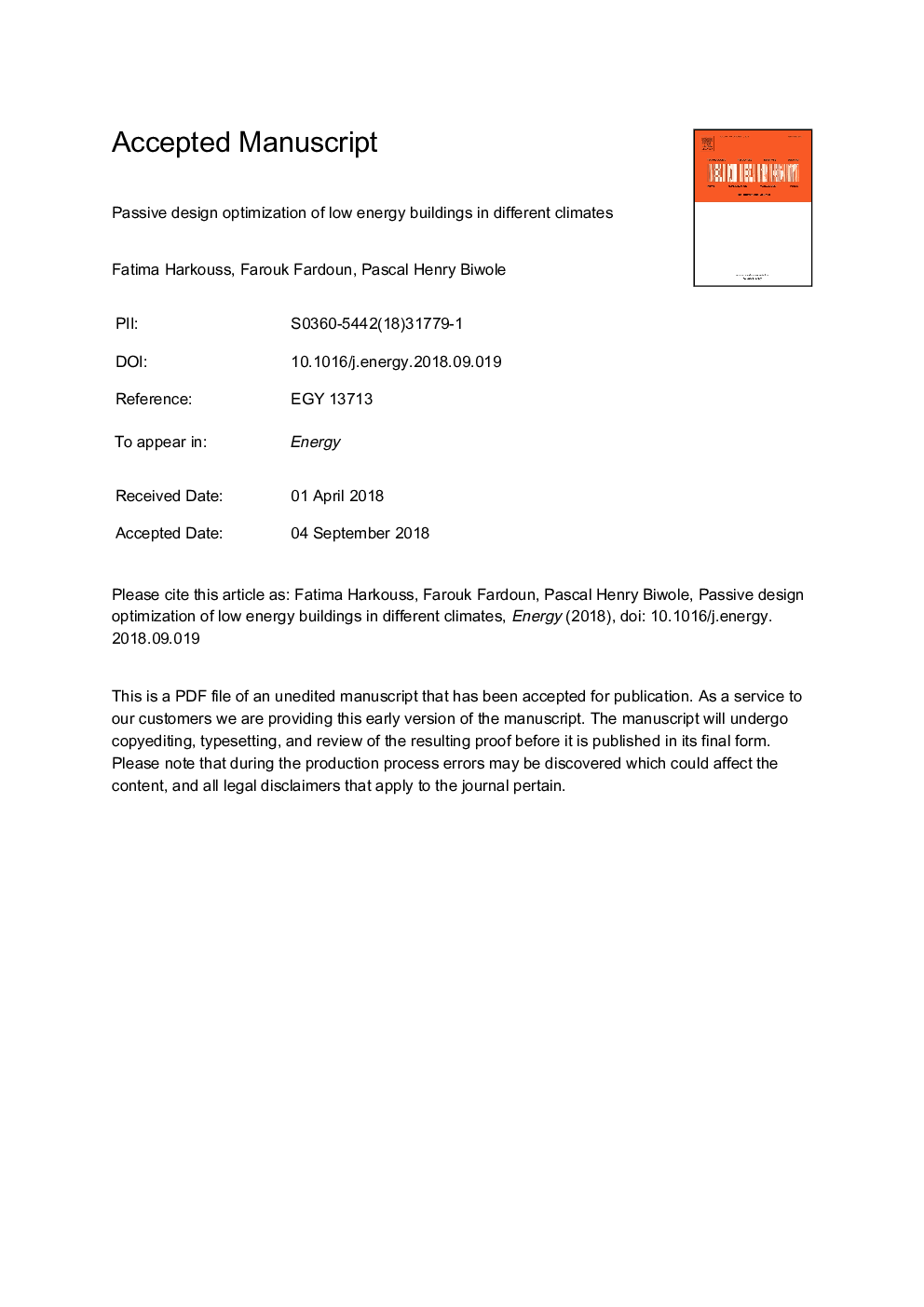| Article ID | Journal | Published Year | Pages | File Type |
|---|---|---|---|---|
| 10156250 | Energy | 2018 | 48 Pages |
Abstract
Worldwide, the residential buildings are consuming a considerable amount of energy. The high potential of buildings towards energy efficiency has drawn special attention to the passive design parameters. A comprehensive study on optimal passive design for residential buildings is presented in this paper. Twenty-five different climates are simulated with the aim to produce best practices to reduce building energy demands (for cooling and heating) in addition to the life-cycle cost (LCC). The occupants' adaptive thermal comfort is also improved by implementing the appropriate passive cooling strategies such as blinds and natural ventilation. In this respect, the implemented methodology is composed of four phases: building energy simulation, optimization, Multi-criteria Decision Making (MCDM), sensitivity study, and finally an adaptive comfort analysis. An optimal passive solution of the studied building indicates the potential to save up to 54%, 87% and 52% of the cooling demands (Qcool), heating demands (Qheat) and LCC respectively with respect to the initial configuration. The obtained optimal passive parameters are validated with the National Renewable Energy Laboratory NREL benchmark for low energy building's envelope. Additionally, the integrated passive cooling strategies have demonstrated its competency since it leads to a significant overheating decrease.
Related Topics
Physical Sciences and Engineering
Energy
Energy (General)
Authors
Fatima Harkouss, Farouk Fardoun, Pascal Henry Biwole,
